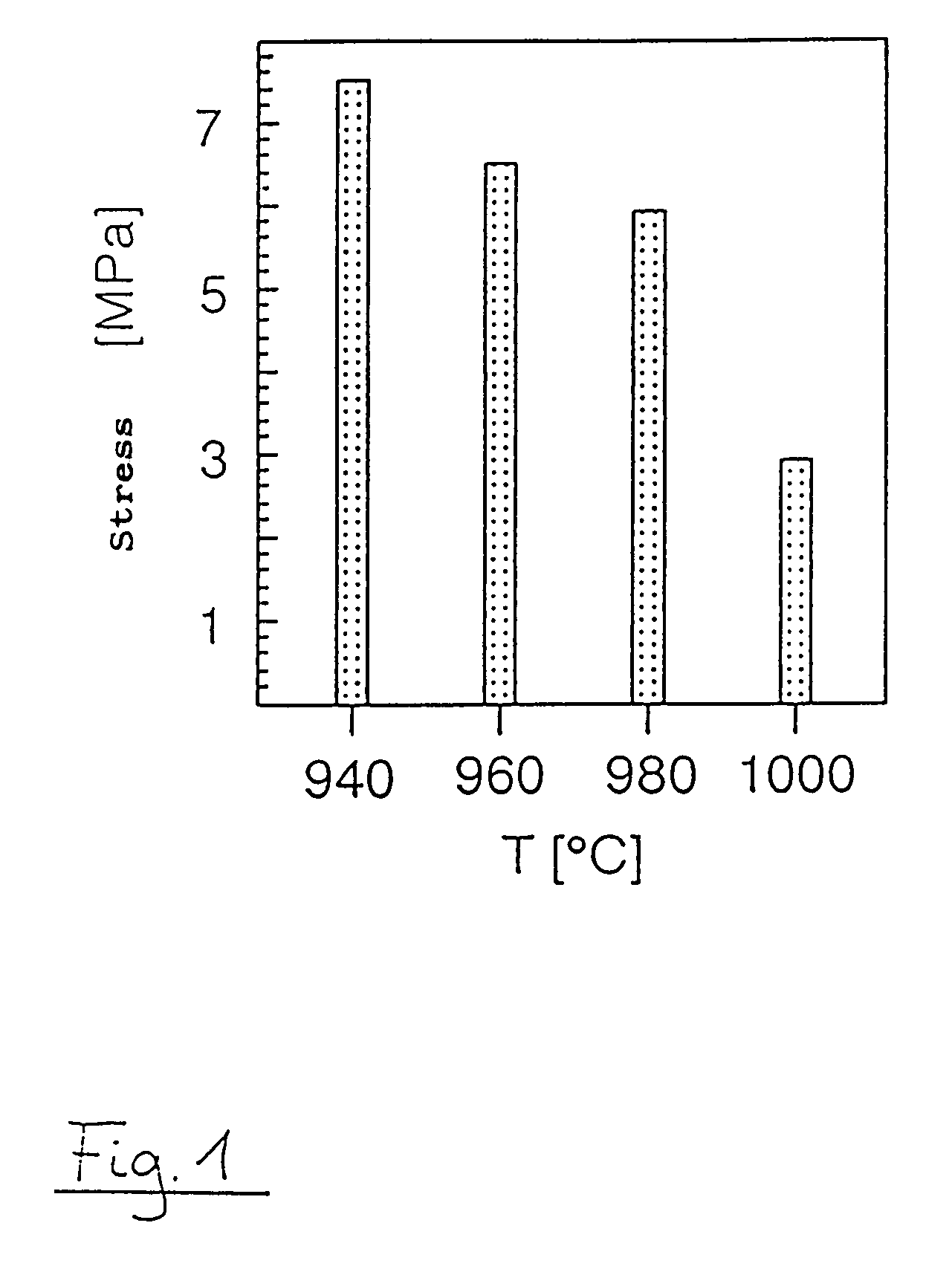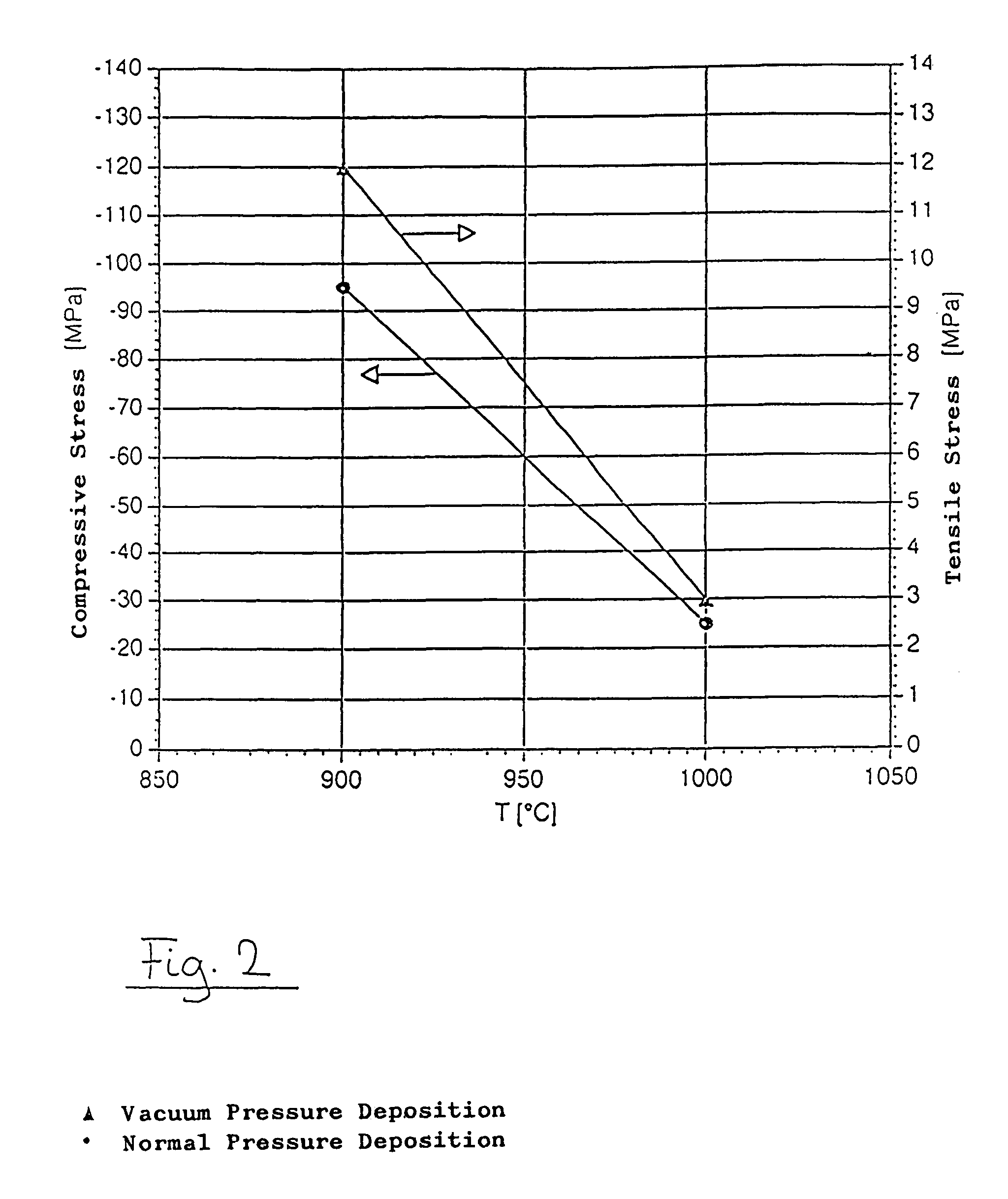Method of fabricating micromechanical components with free-standing microstructures or membranes
a microstructure or membrane technology, applied in the field of manufacturing micromechanical components with freestanding microstructures or membranes, can solve the problems of mechanical stress in the polysilicon, low precipitation rate of the lpcvd reactor layer, and inconvenient precipitation process
- Summary
- Abstract
- Description
- Claims
- Application Information
AI Technical Summary
Benefits of technology
Problems solved by technology
Method used
Image
Examples
Embodiment Construction
[0027]An example of different tensile stresses of polysilicon layers deposited by the method in accordance with the invention at vacuum pressure (here: 10.6×103 Pa) is shown in FIG. 1. The dependence of the stress values on process temperature may be clearly seen. In a temperature range between 940° C. and 1,000° C. the tension varies between about 7.5 MPa and 3 MPa.
[0028]FIG. 2 depicts the dependence of internal stresses of polysilicon layers deposited in accordance with the invention on process temperature (shown in solid line) at two different process pressure settings. As the process temperatures are increased, the stress values of the polysilicon layers drop in respect of both compressive as well as tensile stresses. Low value tensile stresses are generated at vacuum pressure precipitation (10.6×103 Pa; shown by solid triangles), as contrasted to compressive stresses up to 0.1 GPA at normal pressure (atmospheric pressure; depicted by filled circles).
[0029]An embodiment of fabri...
PUM
| Property | Measurement | Unit |
|---|---|---|
| Temperature | aaaaa | aaaaa |
| Temperature | aaaaa | aaaaa |
| Temperature | aaaaa | aaaaa |
Abstract
Description
Claims
Application Information
 Login to View More
Login to View More - R&D
- Intellectual Property
- Life Sciences
- Materials
- Tech Scout
- Unparalleled Data Quality
- Higher Quality Content
- 60% Fewer Hallucinations
Browse by: Latest US Patents, China's latest patents, Technical Efficacy Thesaurus, Application Domain, Technology Topic, Popular Technical Reports.
© 2025 PatSnap. All rights reserved.Legal|Privacy policy|Modern Slavery Act Transparency Statement|Sitemap|About US| Contact US: help@patsnap.com



